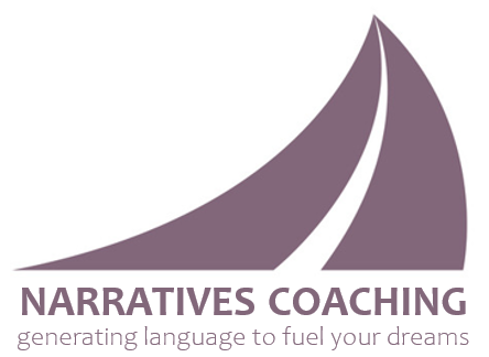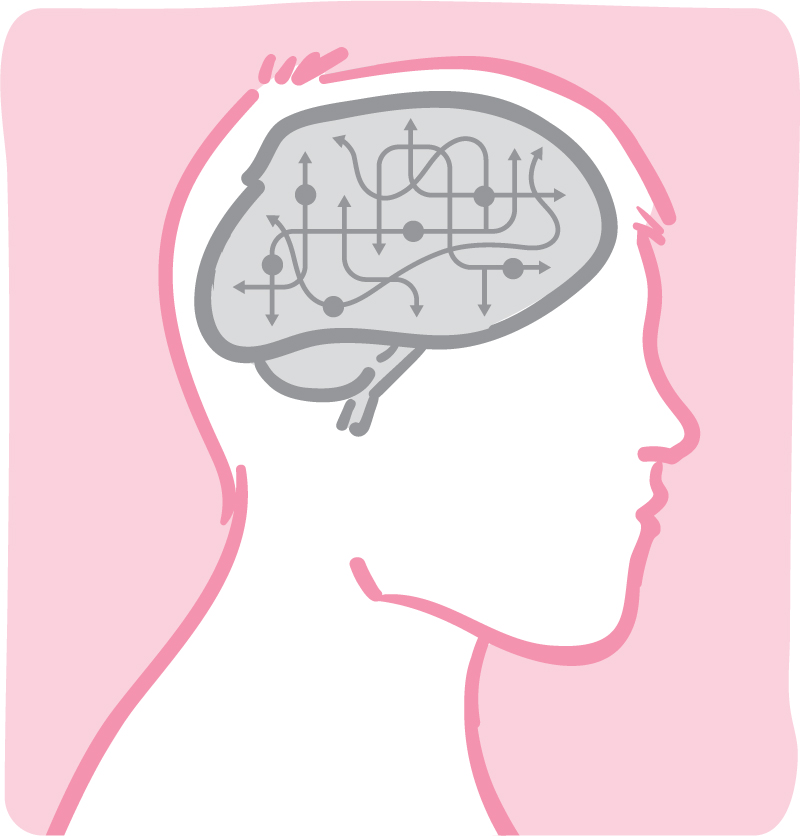Why porn addiction, like drug &
alcohol addiction, is a brain disease.
I recently joined Reddit to participate in the numerous communities related to addiction and recovery. My first impression was, gosh, there are sooooo many people suffering either from addiction disorders or as family and friends of someone who is. My second impression was, holy cow, with everything we’ve learned about addiction as a disease, especially over the past 20 years, the amount of confusion, misinformation and lack of understanding is profound. Worse, the amount of bad advice and inaccurate guidance provided is incredibly unfortunate, preventing people from pursuing and securing the help they need. As a result, I felt compelled to publish something along the lines of “Addiction 101: Why Can’t They Just Stop?”. Specifically, I’m writing this for spouses, family, friends, and other loved ones who don’t understand why their loved one doesn’t just stop the harmful/hurtful behavior and fall back in line with healthy family values.
BLUF
When presenting information in business, we always start with the BLUF – the Bottom Line Up Front. This tells the audience the presentation’s conclusions at the very beginning, allowing them to have a clear context for everything that follows. No wondering “where is this going?” or “what’s he/she trying to make me understand?”. Some of what I’m sharing in this article can be tricky to follow, so starting with the BLUF hopefully makes it easier to track as the information is presented.
Starting from the agonizing appeals “why don’t they just stop?” or “if he truly loved me, he’d quit”, I offer the following BLUF:
- all addictions, whether substance-based or behavioral, are brain disorders
- addiction alters the brain in both structure (how it’s wired) and function (how it works)
- your loved one, once addicted, is NOT able to stop, or even self-regulate, without help
- addictions are relapsing disorders – even with help and having achieved the beginnings of recovery, relapse is common and can be recurrent
- it’s possible to recover fully and enjoy a life restored – BUT – your addict is still an addict – if they return to their addiction, they won’t start back at the beginning, they’ll pick up where they left off
I’ll explain these declarations by revealing what we’ve learned about the neurobiology of addiction, and how that translates into answers to the agonizing appeals above.
Two things to know: first, it’s important to understand that none of this represents an excuse; while not necessarily responsible (e.g., by definition, someone driving drunk is irresponsible), the addict is still 100% accountable for what happens before, during and after they’re impaired. Second, this is a complex subject far beyond the reach of this short article; I’ll do my best to include endnotes and links to further information.
ADDICTIONS ARE BRAIN DISORDERS
Remember way back when – when we thought alcoholism was a moral deficiency, poor character and/or lack of willpower? How far we’ve come in realizing it’s a chronic, treatable illness that, with proper care, can be driven into remission and the person restored to full health and function! Note the use of the word “remission” – it’s still widely held that alcoholism (and addiction in general) is incurable, although treatments continue to evolve to increase recovery efficacy and improve outcomes. Regardless how far we’ve come and how much we now know, we still tend to view and treat addiction disorders as an acute condition rather than a chronic disease. Writing for the Center for Interventions, Treatment, & Addictions Research (CITAR) at Wright State University’s Boonshoft School of Medicine, Dr. Robert Carlson (et al.) posits the following[i]: “Drug addiction is a chronic illness characterized by problematic drug use, followed by periods of abstinence, reductions in use, or return to problematic drug use. Despite this, substance abuse treatment has traditionally been based on an acute care model.” Indeed, despite everything we know about the chronic nature of this disease, we still treat an addiction like we would a broken arm – set the bone, treat the infection, 4-6 weeks to heal, then engage in a short bout of physical therapy to regain strength and, Voilà! – all good and back to normal. A person’s addiction is exposed, the carnage tallied, they’re sent to a treatment center (usually 30-45 days but can be less), then provided a bit of after care, and Viola! – all good and back to normal – right? Unfortunately, not right and, in fact, seriously wrong.
Writing for the National Institute on Drug Abuse (NIDA), Dr. Nora Volkow states[ii] “groundbreaking discoveries about the brain have revolutionized our understanding of compulsive drug use… we know that addiction is a medical disorder that affects the brain and changes behavior.”
In the BLUF I stated addiction alters the brain in both structure (how it’s wired) and function (how it works); this is really the meat of what I want to cover in this article. A remedial understanding of the neurobiology of addiction will begin to shed light on why addicts can’t stop, even in the face of severe consequences – arrests, incarceration, fines, loss of health, loss of employment (and employability), financial ruin, broken marriages and families, disease, etc.
Practice Makes Perfect, Unfortunately
We’ve all heard the adage practice makes perfect, but we typically associate that with positive outcomes like learning to play an instrument to join a band, or practicing a sport in order to be competitive, and certainly honing a skill to advance a career. When I was young, I took trombone lessons and was very serious about being a good player – I practiced 2-3 hours a day for years – and got REALLY good! We all have stories of practicing something until we achieve some level of mastery.
What you’re really doing is creating a habit – training your body and mind, through repetition, to be able to do something without having to think about it. You’re actively creating neuro pathways in your brain which are continuously reinforced and strengthened the more you practice the activity. In medical terms this is called neuroplasticity, and it simply means that the brain is malleable – new neuro pathways can be formed at any time and, as practice makes perfect, the more practiced efforts are the ones which become the stronger, more dominant habits. Another word for this is habituation.
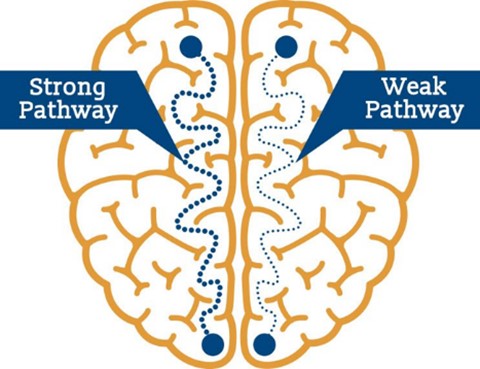
But what if what you’re practicing is tied to a negative outcome, like smoking, or binge-eating junk food, or staying up too late to consume social media? It’s easy to fall into bad habits, and we all do. Unfortunately, there are consequences (i.e., heart disease, bronchitis, obesity, not getting enough sleep, low energy throughout your day, etc.). Worse, it can be profoundly difficult to change the habit once formed – just ask any smoker who’s tried to quit; nicotine is one of the most addictive and hardest-to-quit substances on the market, as well as being one of the deadliest with long-term use (cigarette smoking is responsible for more than 480,000 deaths per year in the United States, including more than 41,000 deaths resulting from secondhand smoke exposure. This is about one in five deaths annually, or 1,300 deaths every day[iii]).
Extending the ‘practice the trombone’ analogy above, what if the habituated activity is viewing pornography – 2-3 (or more) hours per day, for years, or even decades? What does this do to the wiring in the brain – what neuro pathways are created and strengthened from this repetitive activity? As with any other practiced habit, turning to pornography becomes just another automatic and reflexive response to life’s cues and triggers – and like other negative habits, has unfortunate consequences: decreasing interest in one’s spouse or partner (to the point of complete apathy), inability to be intimate, infidelity, increasingly deviant forms or pornography (or other forms of sexual acting out), depression, loss of interest in previously enjoyable activities, significant loss of time each day, diminished self-esteem, PIED (porn-induced erectile dysfunction), and more.
Drugs, alcohol, smoking (including vaping), gambling, viewing pornography, etc. – it doesn’t matter – with repetitive use, substances and behaviors change the brain’s structure in the same way, creating and strengthening the neuro pathways to the point the activity becomes primary. Once habituated, substance-use or process-based addictions (like pornography) can be nearly impossible to stop without treatment. As stated in the BLUF, your loved one, once addicted, is NOT able to stop, or even self-regulate, without help. They’ve dug themselves into a hole so deep that the only way to escape the guilt, shame, agony and despair, is to turn increasingly to the same addictive behavior that trapped them in the first place. They’re completely powerless over the substance or behavior, and their life is completely beyond their ability to manage or control.

Let’s now look at how the brain is changed functionally.
It’s Even Worse Than You Think – The Biochemistry of Pleasure
While we still have much to learn about addiction – its many causes and effects – we’ve made HUGE scientific progress in the past 20 years and gained even more traction in the past 10. Turning again to NIDA, addiction[iv] “…is considered a brain disorder, because it involves functional changes to brain circuits involved in reward, stress, and self-control. Those changes may last a long time after a person has stopped taking drugs.” These very brain circuits, responsible largely for pleasure, reward, and survival are hijacked by drug chemistry[v] and, in the very same manner, by the process addictions which trigger the same circuitry. While we have slightly better understanding of gambling, shopping and food addictions, including increasingly effective treatment mechanisms, we still have much to learn about gaming, internet, social media, and sex and love addiction (yes, love addiction is a thing). Here’s what happens in the brain of a sex and porn addict.
In the Medial Forebrain (lower mid-brain) is a system called the Mesolimbic System, also called the Reward Pathway (shown below in red), as its function is to reward positive experiences necessary for thriving and survival. The Mesolimbic is one of the least evolved systems given its primal function and is sometimes referred to as the reptilian brain (one of three systems considered reptilian). When the reward system fires in response to a positive, pleasurable or rewarding event, it registers this as something necessary which should be repeated, then checks in with other systems (i.e., the Mesocortical System) responsible for memory, attention, learning, and emotional behavior. Together, these systems ensure positive, pleasurable experiences are remembered and neurologically strengthened so as to guarantee they’re repeated. Fortified behaviors derived from habituated experiences in this part of the brain can be very difficult to change; further, this system does its work long before the thinking part of the brain (the decision-making executive function found in the pre-frontal cortex) is engaged to logically test whether a behavior will be good or bad, right or wrong, or helpful or hurtful given the known or anticipated consequences.
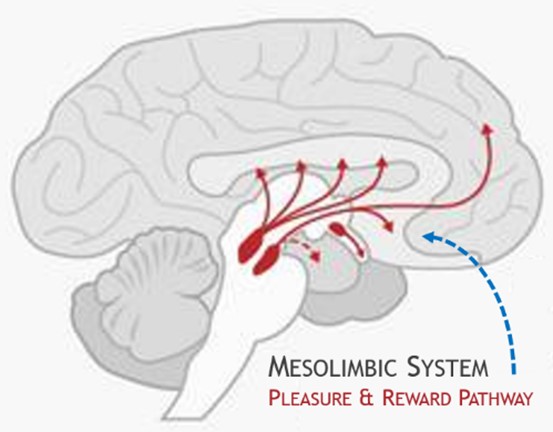
When a positive, pleasurable or rewarding event takes place (e.g., I was hungry, I ate some food, I felt better immediately – now, every time I get hungry, I eat food and feel better – I need this to survive), the reward pathway lights up and an electro-chemical process takes place. Specifically, the neurotransmitter dopamine is released from neurons in the Ventral Tegmental Area (VTA) and received by neurons in the Nucleus Accumbens (NAc), and the person gets a satisfying, almost euphoric sensation – a pleasurable experience – and is highly motivated to repeat this behavior. Any positive experience can trigger this system and the release of dopamine and, as structural neural pathways are strengthened through habituation (discussed above), this functional electro-chemical triggering of the reward pathway is strengthened in a process called potentiation, strongly reinforcing the desire to repeat the behavior. I call these ‘dopamine squirts’.
This reward system, used properly, ensures positive behaviors are rewarded, remembered and tied to related emotions; we welcome these feelings of pleasure and happiness, and are highly motivated to repeat them. BUT – what if the system is triggered artificially either by a substance (e.g., cocaine, heroin, etc.) or by a behavior, such as gambling, eating, or viewing pornography? It’s well known that substances act on the brain by stimulating the release of dopamine (and numerous other neurotransmitters), and it’s now understood that process addictions operate in much the same way. Here’s the problem, and this is why it can be devastatingly hard to stop and stay stopped; artificially triggering the reward pathway causes it to function in an irregular way. Cocaine, for instance, artificially triggers the release of several times the normal amount of dopamine, then causes it to remain in the space between the sending and receiving neurons far longer than what is normal. This flood of dopamine is responsible for the massive euphoric high the user feels. While different substances trigger the release of different neurotransmitters, it’s this ‘dopaminergic rush’ the addict habituates and which begins the unstoppable compulsive/obsessive seeking behavior.
The graphic below illustrates the difference between normal and artificially triggered neurotransmission; note how cocaine blocks dopamine from being recycled (transported back to the presynaptic neuron). The massive flood of dopamine, coupled with the excessive amount of time dopamine is held in the synaptic cleft, creates the desired euphoria, but has an unfortunate side effect: the brain is pretty smart and recognizes the abnormal amount of dopamine – it tries to adjust back to normal by reducing the number of dopamine receptors on the receiving neuron. Over time and with repetition, the receiving neuron, with increasingly fewer dopamine receptors, becomes desensitized, thereby requiring more cocaine to achieve the same euphoric rush. This is tolerance, and it’s well documented[vi] in the substance abuse field. This effect is also present in the brains of people with process addictions, and pornography is an especially insidious candidate.
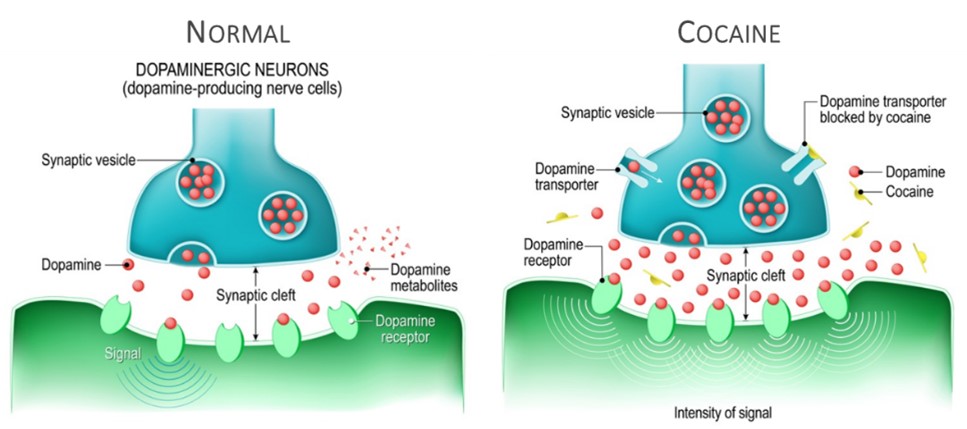
Pornography has the unfortunate qualities of being highly Available, Affordable, and Anonymous. These have long been known as the “3 A’s” of porn, but another is emerging – Aggressive. Social Media applications (e.g., TikTok, Instagram, Tumblr) are increasingly exploited to deliver pornography, and pornographers use these platforms to aggressively drive users to pay sites like OnlyFans and Patreon. More, amateurs are increasingly using social media platforms to upload their own home-made pictures and videos; while against TikTok’s community guidelines, nudity and sexual activity is pervasive on the platform and, unfortunately, an increasing amount of it is from minors[vii].
There’s even more to the insidious nature of porn addiction which makes it so difficult to stop. Beyond the availability, affordability, anonymity and increasingly aggressive marketing, is the ritualization attached to the porn watching process – one might even refer to this as “the porn-soaked brain”. We can imagine an alcoholic binge-drinking – you can only drink so much so quickly, and it takes time to get drunk then maintain the high, and you can only get so drunk before you pass out or become ill. We’re also familiar with the ritualized process of shooting heroin or smoking crack cocaine – these rituals take time and there’s always a get high, come down, get high, come down cyclical process which takes place. Not necessarily so with a consumer of pornography; while a porn addict may turn to pornography numerous times throughout the day for a quick fix (a dopamine squirt providing a quick euphoric rush to “take the edge off”), there’s also binge-watching, where an addict might spend 2, 4, or 8 or more hours at one sitting, staring at a screen, beaming pornographic pictures and videos directly into the brain. Imagine how the brain’s neural pathways are being immutably scorched and trained to repeat porn watching; imagine what’s happening to the reward pathway and the neurotransmitters designed to keep us happy, safe and reward good behaviors.
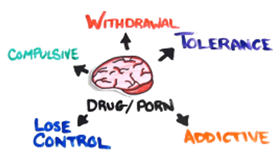
Now also try and imagine what’s happening in the mind of a porn addict who comes home to find his or her partner wanting to be amorous, needing emotional support, or simply wanting a few moments of intimacy. The unsuspecting partner is thinking “I’ve been waiting all day to see you and get a hug”, while the porn addict is thinking “you look the same as when I left this morning, and yesterday, and last week, and last year, etc. – I just spent hours looking at thousands of naked bodies engaged in all varieties of sexual activity – and you want me to do what?” In other words, zero interest. Imagine if the addict has been actively using porn for years or decades – no one can compete with that, no one. Further, research proves that when it comes to sex and attraction, variety is indeed the spice of life. Evolution has wired us to survive and pass on our genes, and the data shows irrefutably that both males and females are biochemically primed for variety and novelty in mating. This is known as the Coolidge Effect, and here’s a fantastic article[viii] describing the details.
The bottom line is this: we have no innate circuits in our brains to drive the use of drugs, alcohol, gambling, or internet/social media use – we develop these appetites through desire and habituation, eventually becoming enslaved to them in the form of addiction. We do, however, have powerful instinctual neurological systems to support procreation, and the abuse of these into something dysmorphic results in extreme damage to our ability to enjoy, or even participate in, natural physical and emotional relations with others. Once porn use has devolved to the addictive state, nothing short of a complete reboot of our sex-based brain systems is going to interrupt the process and create the opportunity for a slow, systematic recovery. Thankfully, there exists increasing evidence that porn damages the brain[ix] and increasing support for this “reboot” idea.
RebootNation.Org is one of a number of fantastic resources emerging to help people begin the process of real and effective recovery. A few others are:
- Porn Reboot | Elevated Recovery (pornrebootprogram.com)
- Your Brain on Porn: Rebooting Basics – R|TRIBE (rtribe.org)
- Rebooting Basics: Start Here – Your Brain On Porn
- 6 Ways: How Simplicity is the Key to a Successful Porn Reboot (blockerx.net)
- Quitting porn using our 3-step recovery model | Reward Foundation
The social media site Reddit has an expansive number of sub-Reddits dedicated to recovery from sexual addiction and, specifically, pornography. A good sub to begin following is r/NoFap[x].
To reiterate from the BLUF, all addictions, whether substance-based or behavioral, are brain disorders; addiction alters the brain in both structure (how it’s wired) and function (how it works); and finally, your loved one, once addicted, is NOT able to stop, or even self-regulate, without help. What’s needed is a complete reboot – a priority-based concerted and supported effort to restore normal brain function, and a complete behavioral transformation to restore one’s natural desires and responses to relational stimuli devoid of artificial fantasy driven by the novelty and variety of porn. While absolutely possible, it is admittedly hard, and both the addict and his or her loved ones must be 100% ‘all-in’ to support what can be a protracted and oftentimes arduous process.
There are two additional factors to consider, and both can make the recovery journey more difficult. First, there is an unfortunate amount of complete nonsense to be found on the internet and within our social communities with regards to porn – how it’s harmless and just another natural expression of healthy sexuality, along with how masturbating to pornography is “normal” and actually good for us. Neither is true. Second, addictions are relapsing disorders and, once in recovery, people who relapse are often shamed or otherwise berated for failing; like learning to walk, one must accept falling and getting back up as part of the process. This is not an excuse or a get-out-of-jail-free card, but rather a simple recognition that rebooting the brain’s structure and function, along with modifying deeply habituated behaviors is a slow and difficult process – two steps forward and one step backwards is sometimes the reality of sexual addiction recovery.
RELAPSE IS COMMON AND CAN BE RECURRENT
The BLUF posits that addiction disorders are relapsing disorders – even years after last using, an addict can be triggered and either relapse, or desperately want to. Without protection, the addict can become vulnerable to the overwhelming obsessive/compulsive thinking that drove them to behave in utterly selfish and insane ways; more often than not, the addict is just as surprised as his or her loved ones. In recovery we say, “continuous recovery requires continuous effort” and, although it does get easier over time, triggers are everywhere and continuous recovery absolutely requires continuous effort. Period. There are no silver bullet, quick, or permanent fixes. Recovery takes work.
One of the best definitions of addiction comes again from NIDA[xi]: “Addiction is defined as a chronic, relapsing disorder characterized by compulsive [drug] seeking and use despite adverse consequences.” While this definition is written for drug addiction, I hope I’ve made clear that addiction is addiction, regardless being substance- or process-based – simply replace the word ‘drug’ with whatever substance or process is involved. I like this definition for two reasons – first, because it establishes addiction as a chronic disease manifest as compulsive seeking despite severe consequences, which I’ve already covered. Second, it accurately identifies addiction as a relapsing disorder, which is unfortunately the rule, not the exception. Recovery is hard – reprogramming years (or decades) of neuroplastic habituation and biochemical distortion (destruction) takes time, certainly months, and sometimes years to establish normative healing and restoration.
NIDA also states[xii] “40-60 percent of people struggling with addiction will relapse after treatment; this is compared with 30-50 percent of people with type I diabetes and 50-70 percent of people with asthma or high blood pressure”, indicating that addiction disorders are chronic conditions more similar to asthma and diabetes than to the acute broken arm example earlier. I personally believe the addiction relapse rate is much higher; the agencies and researchers who collect, analyze, and report these statistics don’t include non-medically prescribed cohorts like mutual support groups (e.g., 12-step programs including CA, AA, OA, GA, NA, SA, SAA, SLAA, SMART Recovery, Celebrate Recovery, HOPE Recovery, LifeRing, Moderation Management, Refuge Recovery, Wellbriety, White Bison, Women for Sobriety, and many more who don’t report recovery/relapse statistics).
My (non-scientific but extensive) experience with these programs indicates a higher rate of relapse for substance addictions, and even higher rates for sex addictions. There are a couple reasons for this; first, it’s easier to stop drinking and stay stopped given you never again have to drink alcohol – it’s not necessary to sustain life. Not so with sex – as already described above, we have natural and God-given sexual, procreative and social instincts – we’re sexual beings, and proper expression of our sexuality is paramount to a happy and healthy life (with ourselves and others). When we distort these instincts into something toxic and harmful, it can take significant time and work to restore them to the point we can enjoy authentic intimacy and stop making others the object of lustful fantasies.
The expectation levied on porn addicts is that, once they’re in recovery, everything’s back to normal and they can give and receive love, closeness, intimacy, affection, and experience arousal and orgasm like they did before porn changed their brains. They can’t, and it can take years to return to normal function. Patience – a Godly amount – is necessary for both the addict and his/her loved ones.
It’s a Wrap
One final point before we conclude – many, MANY who endeavor to recover from addictions do so thinking all they have to do is stop using the substance or behavior causing the problems. Well, nature abhors a vacuum – if, for example, you spent four hours per day watching porn, and this activity enveloped all aspects of your body, mind and spirit, you can’t just stop and not fill that space with something else. Failure to replace the toxic with the healthy is where co-addiction begins.
The “nature abhors a vacuum” idiom represents a fundamental law of nature and is central to the idea of creating space for change – not empty space where nothing exists, but deliberate and intentional space where new realities, habits, behaviors and self-affirming patterns of thinking can take root and begin to grow. The rebooting/reprogramming process must include these new default reactions and responses to life’s ups and downs, or some other drug or process which triggers the same reward circuitry in the same way will take porn’s place. To this end, it’s critical to be excessively deliberate about replacing bad thinking and behavior with good; sometimes this requires help from recovery groups like SA, SAA, or SLAA, or professionals in the form of relationship counselors, clinical psychologists, addiction/recovery specialists, and potentially even psychiatrists – whatever is needed to establish and maintain one’s feet firmly cemented on the path to self-directed wellbeing without needing pornography just to feel normal. Again, it can be a slow and difficult process, but it is absolutely possible and well-worth the effort.
The BLUF presented one final declaration, which will be the topic of a follow-on article:
- it’s possible to recover fully and enjoy a life restored – BUT – your addict is still an addict – if they return to their addiction, they won’t start back at the beginning, they’ll pick up where they left off
As always, I hope this has been good, helpful, useful and informative; I look forward to comments and feedback and, if you find yourself in the midst of what’s described in this article, just know there is help and hope – reach back to me and I’ll do my best to help you get your life back on track!
ENDNOTES
[i]Carlson, Robert, Ph.D. 08/26/2016. Comparing Acute and Continuous Drug Abuse Treatment: A Randomized Clinical Trial (1RC1DA028467-01). https://medicine.wright.edu/citar/comparing-acute-and-continuous-drug-abuse-treatment-a-randomized-clinical-trial-1rc1da028467-01
[ii] NIDA. 2020, July 20. Preface. Retrieved from https://www.drugabuse.gov/publications/drugs-brains-behavior-science-addiction/preface on 2021, May 18
[iii]https://www.cdc.gov/tobacco/data_statistics/fact_sheets/fast_facts/index.htm#:~:text=Cigarette%20smoking%20is%20responsible%20for,or%201%2C300%20deaths%20every%20day.&text=On%20average%2C%20smokers%20die%2010%20years%20earlier%20than%20nonsmokers.
[iv] NIDA. 2020, July 13. Drug Misuse and Addiction. Retrieved from https://www.drugabuse.gov/publications/drugs-brains-behavior-science-addiction/drug-misuse-addiction on 2021, May 21
[v ] Barnard, S. 2021. The Opposite of Addiction. Retrieved from https://narrativescoaching.com/the-opposite-of-addiction/
[vi] ScienceDirect. Drug Tolerance. Heuristically generated at: https://www.sciencedirect.com/topics/medicine-and-dentistry/drug-tolerance
[vii] Scholfield, Daisy. Wired. 01/03/21. TikTok has accidentally conquered the porn industry. Retrieved from: https://www.wired.co.uk/article/tiktok-nsfw
[viii]https://www.yourbrainonporn.com/ybop-articles-on-porn-addiction-porn-induced-problems/you-evolved-to-be-hooked-on-porn/porn-novelty-and-the-coolidge-effect-2011/
[ix]https://www.yourbrainonporn.com/miscellaneous-resources/start-here-evolution-has-not-prepared-your-brain-for-todays-porn/
[x] Get a new grip on life – NF’s official Reddit-hosted forum. https://www.reddit.com/r/NoFap/
[xi] NIDA. 2020, July 13. Drug Misuse and Addiction. Retrieved from https://www.drugabuse.gov/publications/drugs-brains-behavior-science-addiction/drug-misuse-addiction on 2021, May 30
[xii] NIDA. 2020, July 10. Treatment and Recovery. Retrieved from https://www.drugabuse.gov/publications/drugs-brains-behavior-science-addiction/treatment-recovery on 2021, May 16
